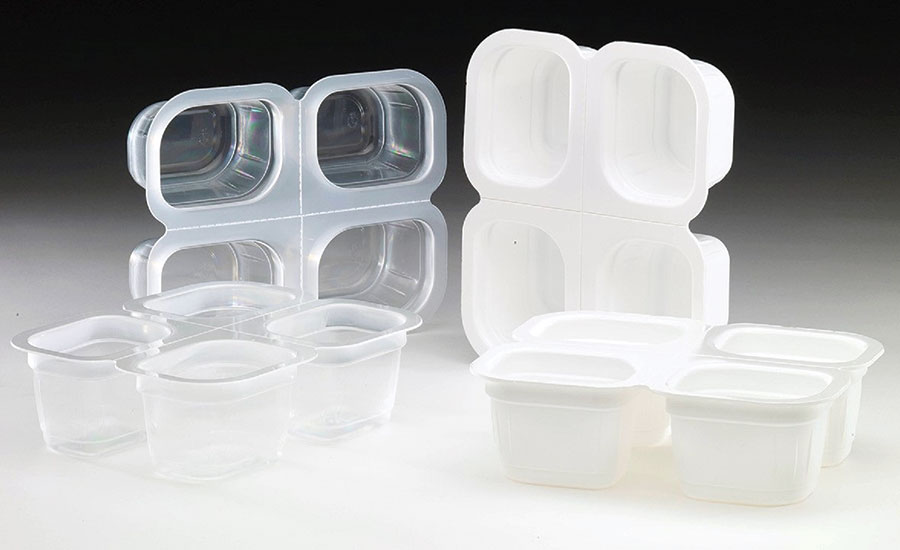
The global rigid food containers market is poised for substantial growth, with projections indicating a valuation of US$ 195.7 billion in 2022 and a robust compound annual growth rate (CAGR) of 4.8% from 2022 to 2032, according to a recent report by Future Market Insights (FMI). By 2032, the market is anticipated to reach a staggering US$ 314.2 billion, driven by increasing demand for convenient and packaged food solutions.
Key Market Insights:
Dominance in Food Packaging Market: Accounting for approximately 55-60% of the global food packaging market, which was valued at US$ 319 billion in 2021, the global rigid food containers market holds a significant share. This dominance underscores the vital role of rigid food containers in the packaging landscape, catering to the diverse needs of the food industry.
Growing Demand for Rigid Packaging: The demand for rigid packaging among various food brands is on the rise, contributing to the bolstering sales of rigid food containers. With the top 5 companies projected to hold approximately 15-20% of the global market share by the end of 2022, competition within the market is intensifying, fostering innovation and driving market growth.
Rising Need for Convenient Food Solutions: The food industry is experiencing a surge in demand for convenient and packaged foods, driven by changing consumer preferences and lifestyles. The appeal of quick and easy-to-prepare meals, coupled with time-saving benefits, has propelled the demand for rigid food containers that offer easy storage and immediate consumption options.
Opportunities for Growth: The rigid food containers market is expected to grow 1.7 times the current market value during the period of 2022-2032, presenting lucrative opportunities for industry stakeholders. With increasing consumer inclination towards convenience and packaged food solutions, there is immense potential for innovation and expansion within the market.
Request for a Sample: https://www.futuremarketinsights.com/reports/sample/rep-gb-5124
Plastic and paperboard will continue to be the most lucrative materials for manufacturing rigid food containers. In addition, sales of plastic and paperboard for production of rigid food containers are expected to register the highest CAGRs in the market through 2022. Glass and metal will continue to be comparatively less lucrative materials than plastic and paperboard in the global rigid food containers market.
Asia-Pacific excluding Japan (APEJ) is anticipated to remain the largest market for rigid food containers, projected to expand at an impressive 5.2% CAGR through 2022. Dominance of APEJ on the market can be highly attributed to robust expansion of food & beverage industry, coupled with an increased demand for eco-friendly & sustainable packaging owing to strict regulations concerning material recycling. China and India will remain the most lucrative countries for the rigid food containers market in APEJ.
North America is expected to remain the second largest market for rigid food containers, with the U.S. being the most lucrative country. Shifting preference towards bioplastics as raw materials for rigid food containers on the back of stringent regulations concerning reduction of carbon footprints will drive growth of the market in North America. Another key factor driving the market growth in this region is increased demand for ready-to-drink beverages and packaged frozen food products on the back of hectic lifestyles of population.
Get In Touch With Our Team For 30% Flat Discount
Implications for New Product Development & Channel Strategies in Food Packaging
Rigid food containers are gaining tremendous popularity since the recent past, offering the food products with a long shelf life. Constantly changing lifestyles of consumers, along with their busy work routine, and rapid shifts in household income & size have significantly affected the consumers’ behaviour of buying food products. This has further led towards important implications for new channel strategies and product development in packaging of food, such as rigid containers. Moreover, robust transformations in demographics, improvisations in manufacturing output & productivity, and huge expenditure on packaging of food products across the globe have fuelled requirement for highly advanced packaging facility, such as rigid containers, in the food and beverage sector.
The global market for rigid food containers is highly fragmented in nature, with a large number of suppliers and manufacturers competing to gain a competitive edge. FMI’s report has listed key participants operating actively in the global market for rigid food containers, which include Huhtamaki Oyj, Bemis Co., Inc., Sonoco Products Co., Printpack Inc., Smurfit Kappa Group PLC, Crown Holdings, Inc., Ball Corporation, DS Smith PLC, Berry Global Group, Inc., Sealed Air Corp., Amcor Ltd., and Packaging Corp. of America.
Key Segments Covered
Region :
- North America
- Latin America
- Europe
- Japan
- APEJ
- MEA
Material Type :
- Plastic
- Paperboard
- Glass
- Metal
Packaging Type :
- Trays
- Bottles & Jars
- Cans
- Cups & Tubs
- Boxes & Cartons
- Others
Application :
- Meat, Poultry & Seafood
- Dairy Products
- Bakery & Confectionary
- Ready to Eat Food
- Baby Food
- Fruits & Vegetables
- Other Applications
Request For Customization: https://www.futuremarketinsights.com/customization-available/rep-gb-5124